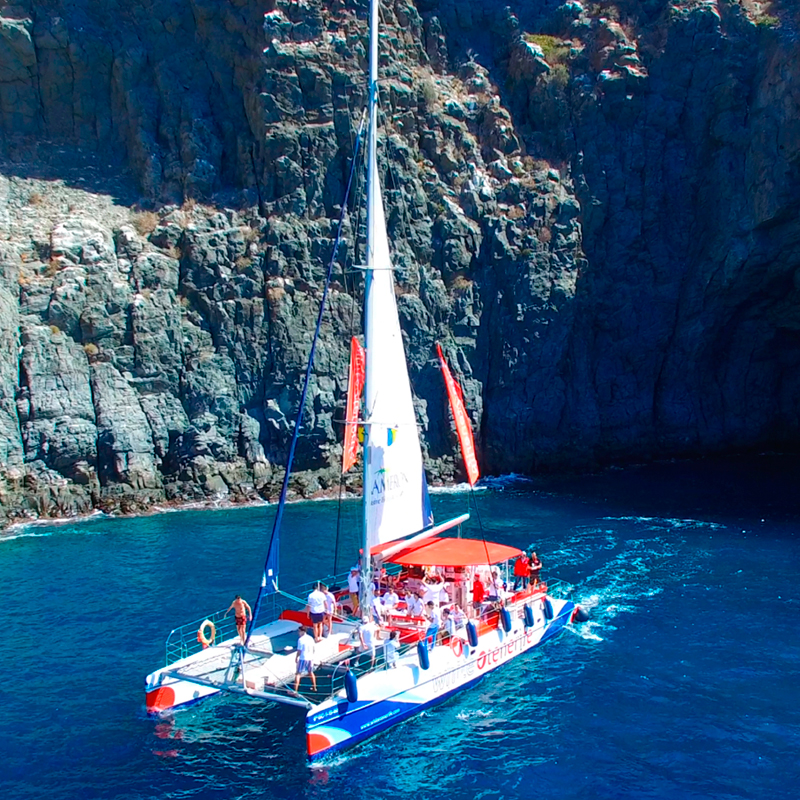The 5 secrets of the Tenerife pilot whale
Third secret of the Pilot Whale
In 2021, Tenerife became the first place in Europe to be recognised as a World Whale Heritage Site and the third in the world along with Hervey Bay in Australia and The Bluff in South Africa. This important award is due to the fact that the southwest coast is home to between 200 and 400 short-finned pilot whales (Globicephala macrorhynchus), as well as several species of dolphins. We tell you the 5 secrets of this species of cetacean that inhabits the coast of Tenerife.
Do pilot whales live alone or in groups?
Pilot whales, also known as long-finned pilot dolphins, are social animals that live in large groups called “pods”. Pilot whale pods may consist of tens or even hundreds of individuals and are known to stay together throughout their lives.
Within pods, pilot whales establish complex and well-developed social relationships, with bonds between individuals lasting for years or even decades. Pilot whale pods are often composed of family groups, and family bonds are known to be very strong in these cetacean populations.
Interestingly, pilot whales are known for their cooperative behaviour and their ability to work as a team to hunt prey and perform other tasks. These complex social and cognitive skills are one of the reasons why pilot whales are considered fascinating animals and are among the most intelligent marine mammals.
Canary pilot whales live in groups of 10 to 30 individuals, but these can be much larger, reaching up to 60. They are not solitary animals, on the contrary, they like to live in a community.
When travelling in the ocean, females and their young usually travel in the centre of the group.
The male pilot whales and the older females are positioned on the sides so that they surround the cetaceans in the centre to protect them from possible threats.
See you soon at White Tenerife!
Whale and dolphin watching
Enjoy the most amazing whale and dolphin experience in Tenerife.


